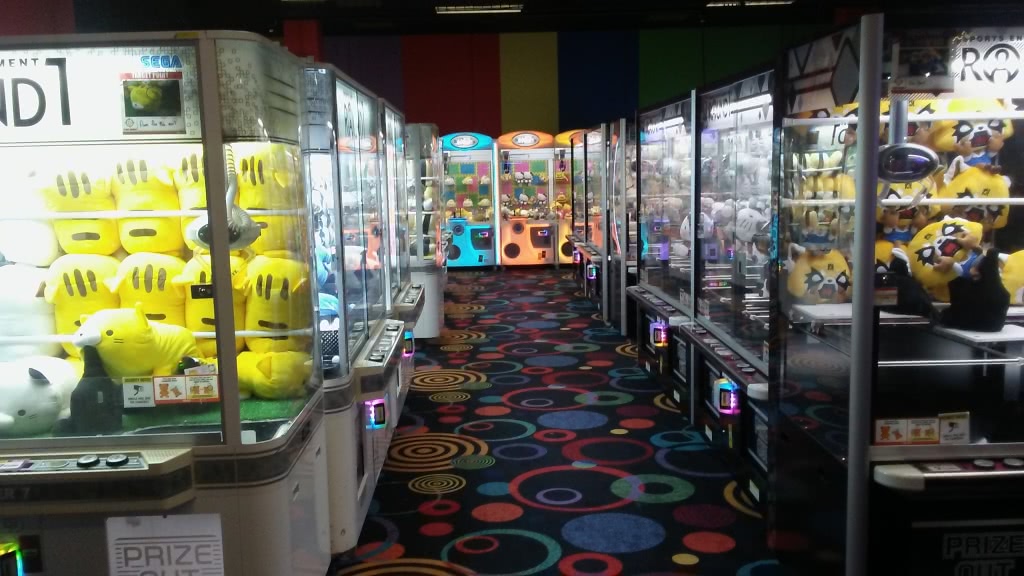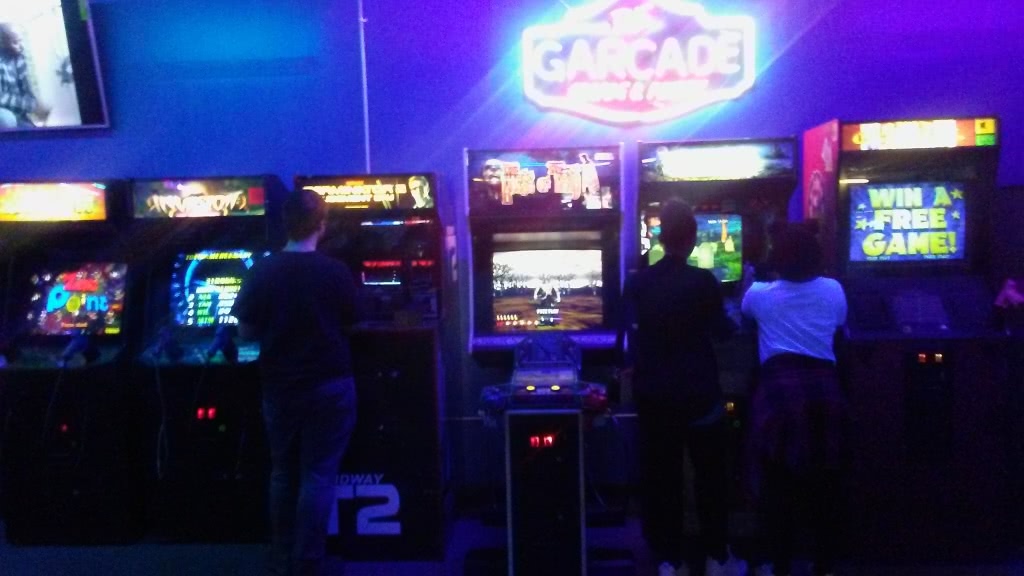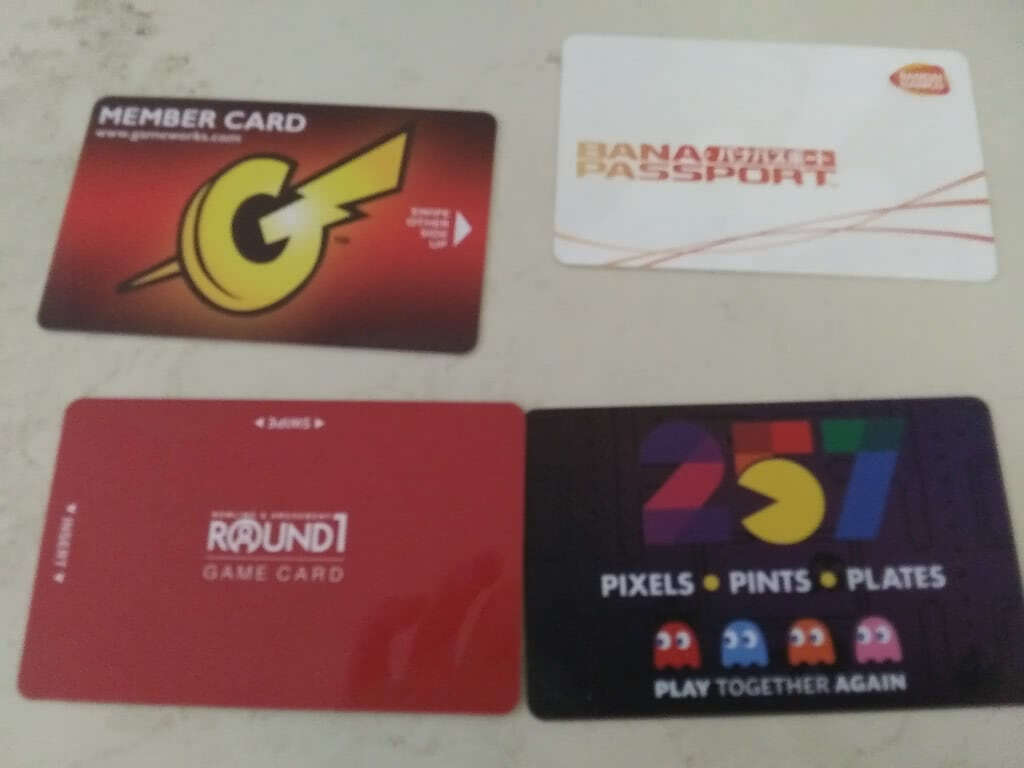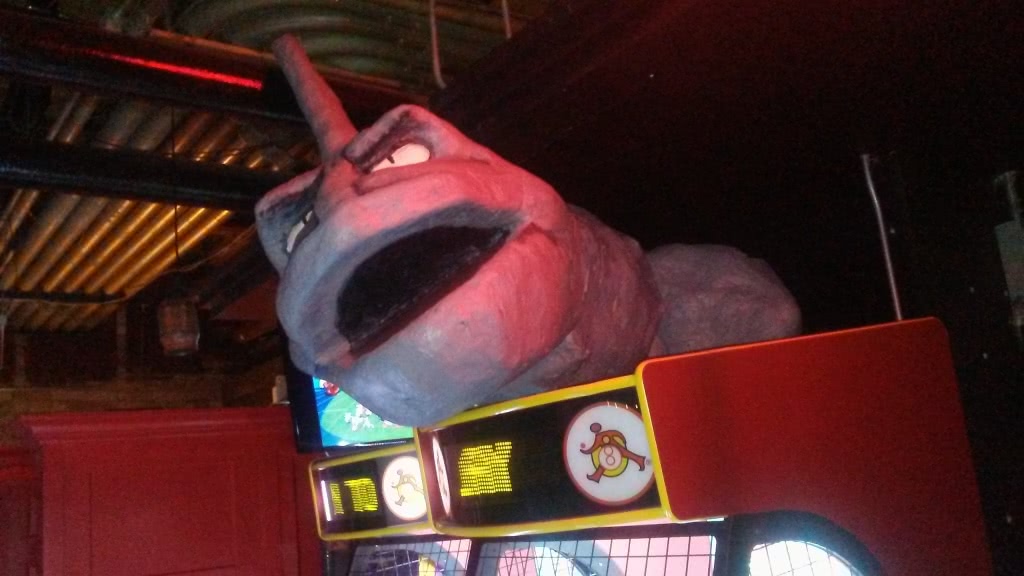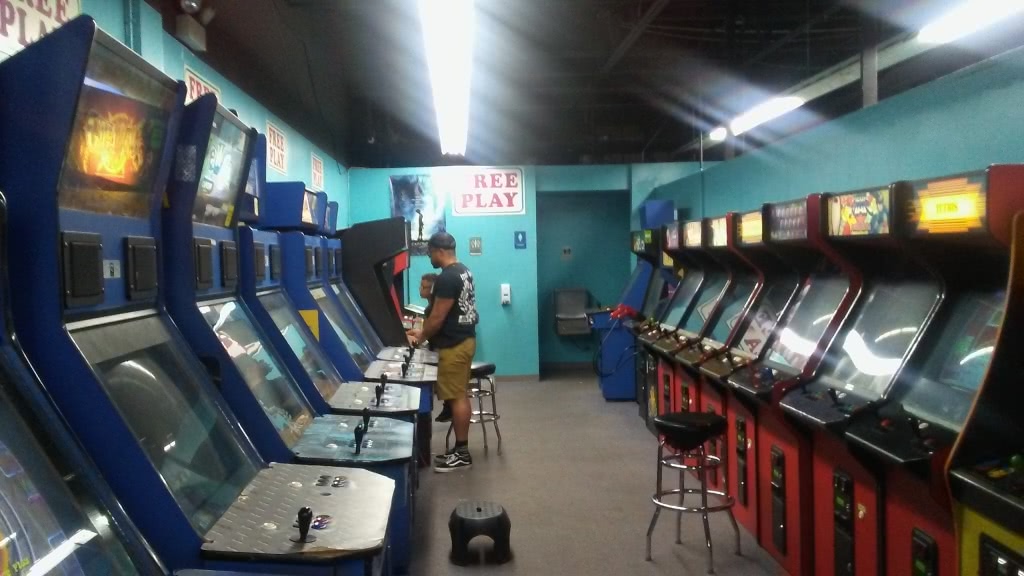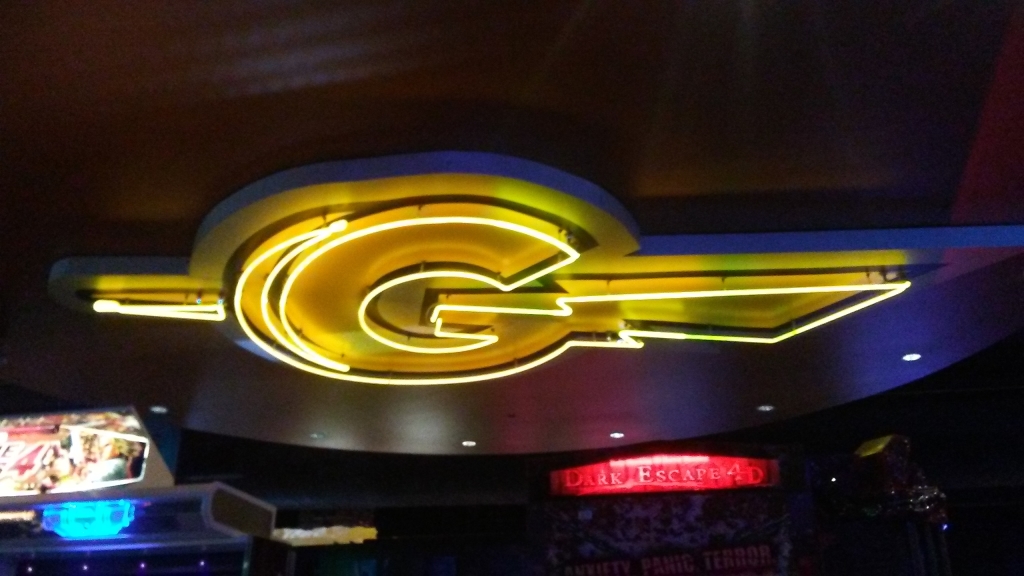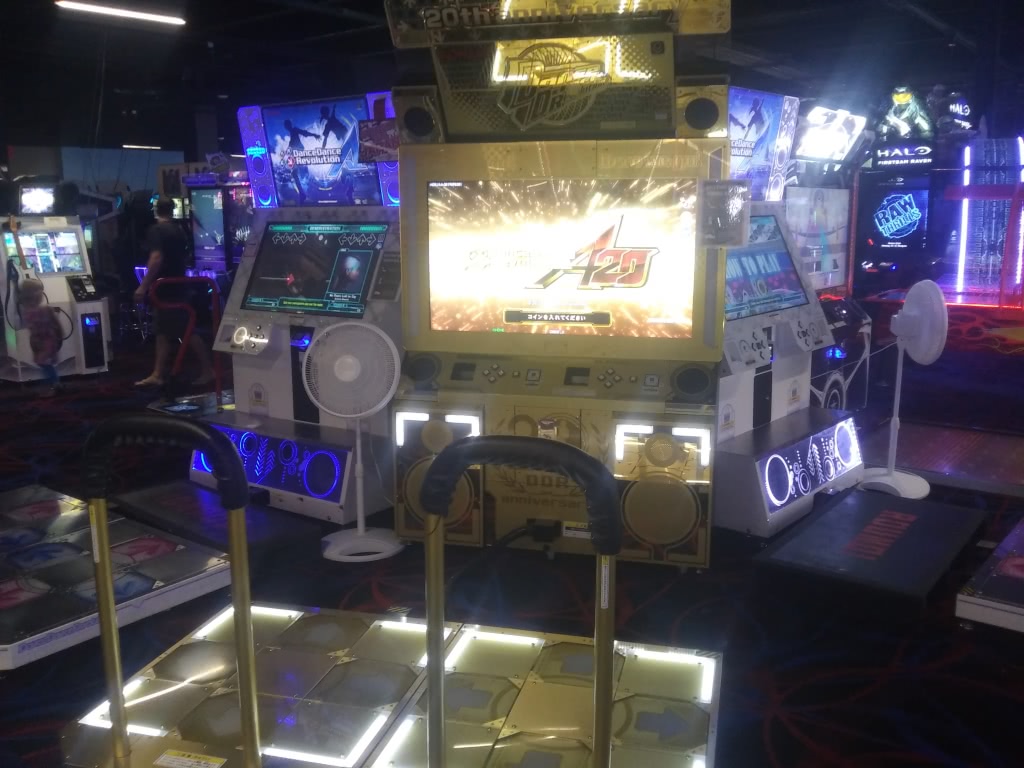
With Tom finally gone, I was free to explore Chicago’s arcades on my own. And “by “free”, I mean”free” means “the buses don’t run on Sunday, so I was stuck only able to go to the nearest one”. Luckily, that arcade happened to be one I was planning on spending a lot of time in anyway.

For those who don’t remember the last disaster, Round 1 is a chain of Japanese arcades that have recently started breaking into the western market. Most major coastal cities have them, but the closest ones to Minnesota are here in Chicago. I’ve wanted to take another crack at this place since I was so rushed the last time I was in one. Having all day to explore ended up working out, even if I was forced to extend my trip (and expenses) another day.

Round 1 advertises itself as a bowling alley first and an arcade second. As you can see, it’s a pretty high-end bowling alley. It reminds me of a more upscale version of Brunswick Zone.

I hate to admit it, but part of me feels like this place is too fancy for my blood. Look at those fancy couches in the lounge area. I don’t think I’d ever want to come here if not for the arcade.

This snack bar divides the bowling alley from the arcade. I was curious about their food, but it wasn’t open today.

Since Round 1 bills itself as a genuine Japanese experience, it has private karaoke rooms. This is the kind of thing you do with a group of friends. Personally, if I somehow ended up in a group big enough to try doing this, I’d probably be long gone before anyone could suggest it. Going somewhere with one person: If I feel like it. Going somewhere with two people: If someone I know well wants to drag a friend along, fine. Any more than that: More trouble than it’s worth.

Now onto the main event. I immediately noticed that the game selection felt a lot more sterile overall. Most of the imported games were the “headliner” games that Round1 heavily advertises on their website. While the Philadelphia location felt like a dumping ground for whatever extra machines the Japanese places had, the only unusual games were the ones housed in generic candy cabs.
These four games were probably some of the stranger choices. The one on the far right there is Shin Koihime Musou, a fighting game spin-off of a tactical hentai game series. The green one with the hand is Darkstalkers 3 (Vampire Savior), which would be the first time I’ve seen it, if not for the one at Galloping Ghost. The third machine there is housing both Gradius I and II. I THINK the last one there is some version of DoDonPachi, but my memory fails me.

I saw these the last time I was at Round 1, but I was in such a rush that I didn’t have time to play them. At the time, I figured these were just generic machines housing random fighting games. Now that I’ve gotten to sit down and play one of them, I finally understand what I was actually looking at.

This is a machine running NESiCAxLive. NESiCAxLive is Taito’s arcade game distribution platform. Basically, the arcade owners have to set it up, decide which games from the library they want on the machine, and then players can freely select any of them to play. It’s a very effective way to house a lot of niche fighting games that they wouldn’t have floorspace for otherwise. As you can see, there are a lot of Arc System Works games in there. (King of Fighters 98 and 02 were the only two games on here you can’t see in this photo)

Way in the back corner were three more generic machines housing random games. I’m sure many people will recognise the one on the far right: Marvel vs Capcom 2. Come to think of it; I wonder where the local MvC2 community go to play. The other game is Sega Tetris, one of the most important versions of Tetris ever made. This version of the game caused the competitive Tetris arcade scene to take off in Japan. Every more recent Japanese arcade variant, like the Grand Master series, are spiritual sequels to this version. In the west, the original arcade version is the one people remember. In Japan, it’s this one.

Okay, so a few posts ago, I talked with Tom about how Virtua Tennis had nothing to do with the Virtua series. The Japanese version of the game is called Power Smash, so forcing it into the Virtua series was a western decision. The game you see here is the original Japanese version of Power Smash. The marquee at the top still has the American Virtua Tennis logo, though. I’m surprised that whoever set this game up even knew it had a different name in the west.

Oh god, here’s a game I REALLY liked. A lot. This is Silent Scope: Bone Eater, a modern anime-Esque retooling of the Silent Scope series. This machine easily takes the title of coolest game here at the Chicago Round 1. As with previous games in the series, you play using a sniper rifle with a tiny screen in the scope that you can zoom in with. Unlike past entries, you play as some cool-looking anime boy accompanied by a serious-looking anime girl who stands next to you and gives you directions. It makes the game feel much more plot-heavy.
I also need to mention that you could restore health in past games by holding your scope over a female NPC for a few seconds. I got a good chuckle out of Anime Girl, awkwardly explaining the mechanic in this game. You could tell just by the tone of her voice that even she didn’t think it meshed with the tone this iteration was going for.

It was hard to get a photo that did the screen justice, but I think I managed. This game has two screens: a regular one and a second transparent screen in front that things like dialogue boxes appear on. If you look at the far right of the text, you can see how it “floats” in front of the rear screen.

This is a feature that caught me off-guard the first time it activated. In this game, instead of just walking from position to position, the characters will land on a building, shoot whichever targets the game needs you to shoot, and then swing through the city to the roof of a different structure. It’s like a cross between Spider-man and Attack on Titan. This fan blows wind in your face during these swinging segmentswhile you get a sweeping first-person camera view. I can’t emphasise it enough: This was my favourite machine in the arcade. These unneeded features make the machine feel like they put a lot of effort into trying to make it stand out. It’s a shame that this game is probably too Japanese for anyone to find outside of Round1.

Oh yeah, they had Pac-man seats for the games. Reminds me of Level 257.

Ah, Virtua Fighter 5: Final Showdown. In 2005, Sega released the final entry in the Virtua Fighter series: Virtua Fighter 5. However, that wasn’t quite the end of the series since the game got an update in 2008 and another in 2010. This is Virtual Fighter 5: Final Showdown, the very last update. Coincidentally, it also happens to be the last entry in the long-running Virtua series of games. The others had slowly died over the years. Virtua Racing evolved into Daytona USA before Sega decided to put all their chips in Initial D, Virtua Cop got beat out by House of the Dead as Sega’s main light gun series, and Virtua Strikers didn’t last very long in the first place. It should be noted that Yu Suzuki stopped working on this series with Virtua Fighter 4, though
He DID work on the more recent mobile game spin-offs, strangely enough. I don’t think any counts those.

This is Overtake, a racing game with a gimmick where you choose multiple stages and warp between them at checkpoints. Like you can start on the lava stage, go through a tunnel a third of the way through the course, and then suddenly you’re in the ice area. There’s not anything else noteworthy about this one, as far as I can tell.

Anyone who’s read through my East Coast Adventure probably knows exactly what this is. It’s Let’s Go Island: Dream Edition. Sega’s European arcade branch, the same guys behind SR3, released this virtual theatre-type game called Dream Raiders that we’ve run into a few times before. They decided to port this decade-old arcade game to the hardware for whatever reason. This is the second time they’ve randomly resurrected this game for a new machine. I have no idea whether Sega really likes this cheesy-ass game or if Sega doesn’t have to pay anyone when they re-release it.

This game here is Thrill Drive 3. If you’ve never heard of this series, you may have heard of another game that took inspiration from it called Burnout. The first Thrill Drive, released in 1998, is a dead ringer for the first Burnout game, right down to the damages system and crash cam. After that, the two series diverged pretty drastically, but most people only remember Thrill Drive as “that game that Burnout ripped off”.
I honestly can’t say I’ve run into these games before, so I can’t tell you what’s new to this version. This one has stats you can raise by performing specific actions, like a technique stat for performing certain turns or a curiosity stat that increases by… changing the camera view? I’m not sure what these stats do since it’s hard to find any information about this game, but they’re there.

This is Project Diva arcade, a spin-off/port/sequel of a PSP game about Hatsune Miku. It’s okay. If you’ve wondered what Sega AM2 has been up to for the past decade, this is about it.

Here’s a game that I’m honestly amazed that I’ve never run into before. This is Namco’s Taiko Master, a game series that started back when everyone was trying to cash in on the popularity of the Bemani games. More surprising is that this is one of the few that survived into modern times. If you’re familiar with Donkey Konga for the Gamecube, that game is a soft spin-off of this one made by the same development team and has more-or-less identical gameplay.

Oh, here’s something interesting. In 2010, Konami decided DDR was becoming dated and needed a modern replacement. Then the very short-lived Dance Evolution was born. Eight years later, Konami has finally decided to revisit the idea, except without the whole “this is supposed to replace DDR” thing. This is Dance Rush Stardom, which can only be described as the halfway point between DDR and Dance Evolution.

In this game, a stream of notes will come down the track, akin to something like Guitar Hero. All you have to do is step where it tells you. For example, if a note appears on the far right with an L, you step anywhere on the far right side of the pad with your left foot. It doesn’t matter how close or far you are from the monitor as long as you’re lined up horizontally. Some sections make you jump or duck.
What’s not immediately apparent about this machine is that it’s going after the Dance Evolution crowd rather than the DDR one. If you’re trying to get a good score, there’s very little challenge to be found in this game. The game is built for players to freestyle on. I find that to be a bit stupid. What makes it entertaining to watch freestyle players in other arcade games is the fact that they’re good enough to dance without dropping their game. This is just a stage to shuffle dance on with some loose instructions. If you can make this game look good, there’s no real point in the machine anymore. You can just dance anywhere.

That said, the stage itself is cool as hell. It’s got a full-color display of lights that change based on what’s going on in the game. As you can see here, when you step on the pad, a light pulse shines around your feet. Not that you’ll ever notice this while playing it.
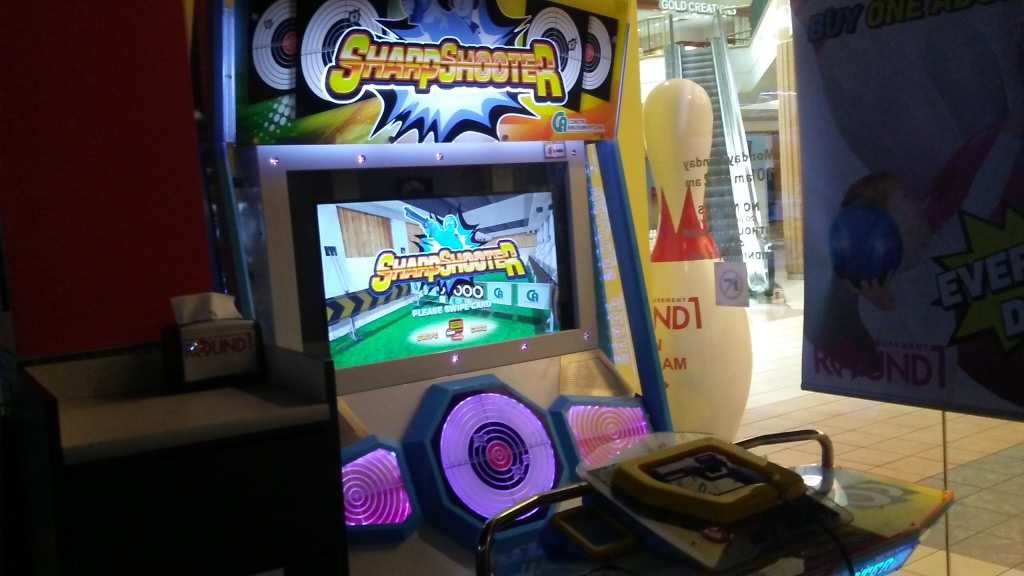
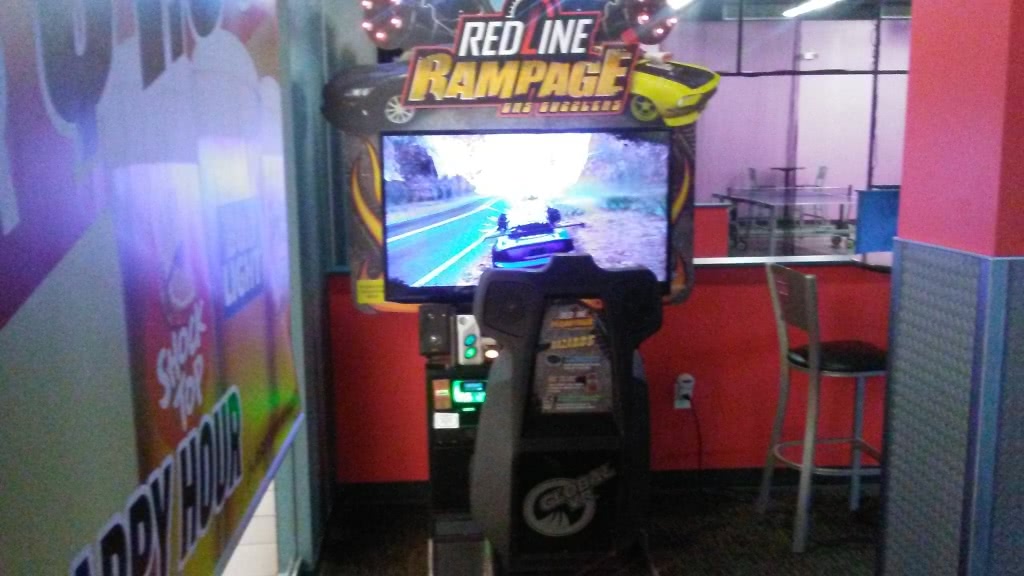
They had a couple of games up front near the door I’d never seen before. They looked extremely uninteresting, so I didn’t play them.

The standard lineup of the Bemani seriessurvived the late 90s. I’ll never get over how lame these white cabs look compared to photos.

I didn’t get a chance to play DDR while I was here since these two guys were on it the whole time. I could have waited in line after them, but I was still sore and sleep-deprived from the day before. I’ve gotten really out of shape lately when it comes to DDR. I blame Minneapolis for not having a good place to play.
By the way, have you seen the new 20th-anniversary gold machines that were just released in Japan? They’re really cool looking. Here’s to hoping we can get one in the Twin Cities somewhere.

God damn it. This is the third time I’ve tried and failed to get a Banapass. I mean, it’s not like I NEED one since we don’t have a local Wangan 5 machine, but I often run into them when travelling.

Since the last time I’ve run into Initial D, I’ve had more to play with these versions. I hate to say it, but I’m not a fan. The biggest issue with these games is that you need to level up your car. This was a mechanic since the first game, but in this version, it’s absurd how gimped you are when you first start playing. It’s extremely difficult to take a corner without losing speed until you’ve gotten a few upgrades, so the first several plays feel clunky. Once you have upgraded, though, the game becomes a lot more playable.
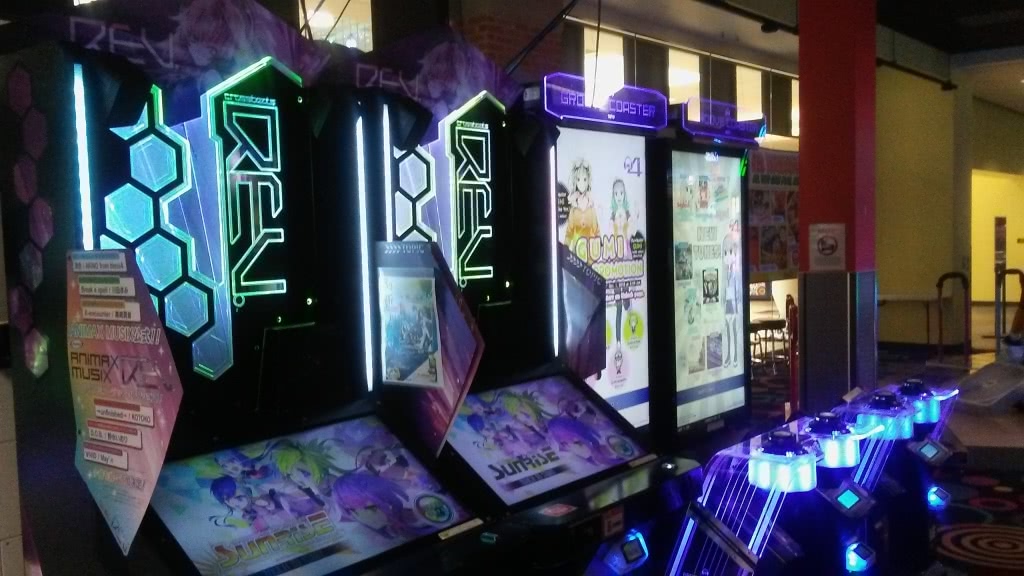
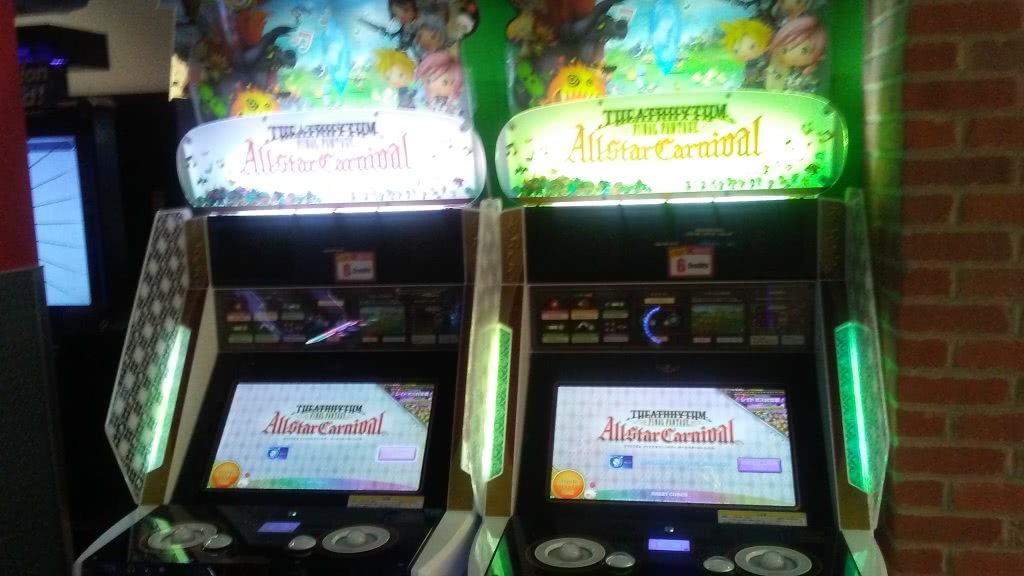
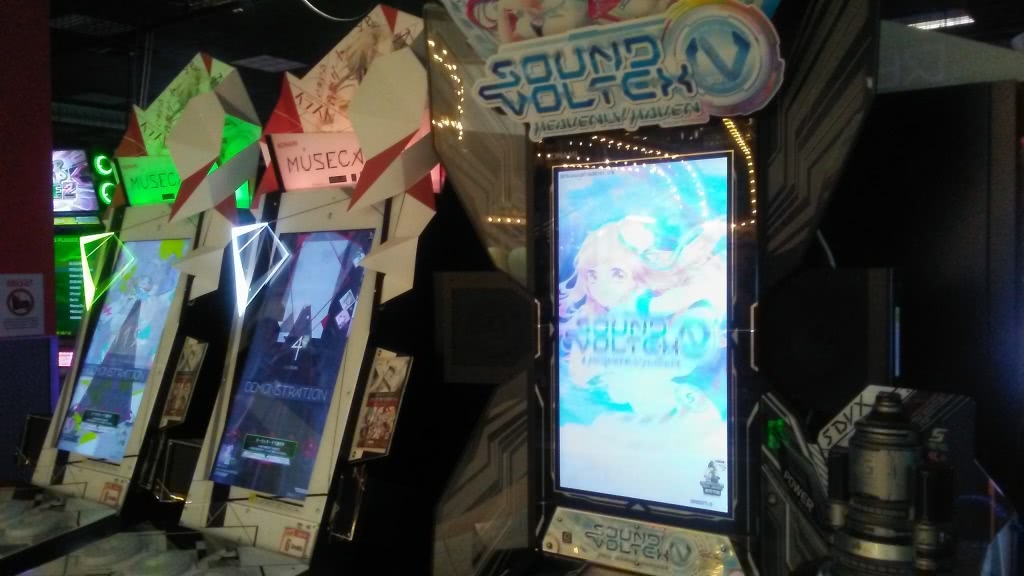
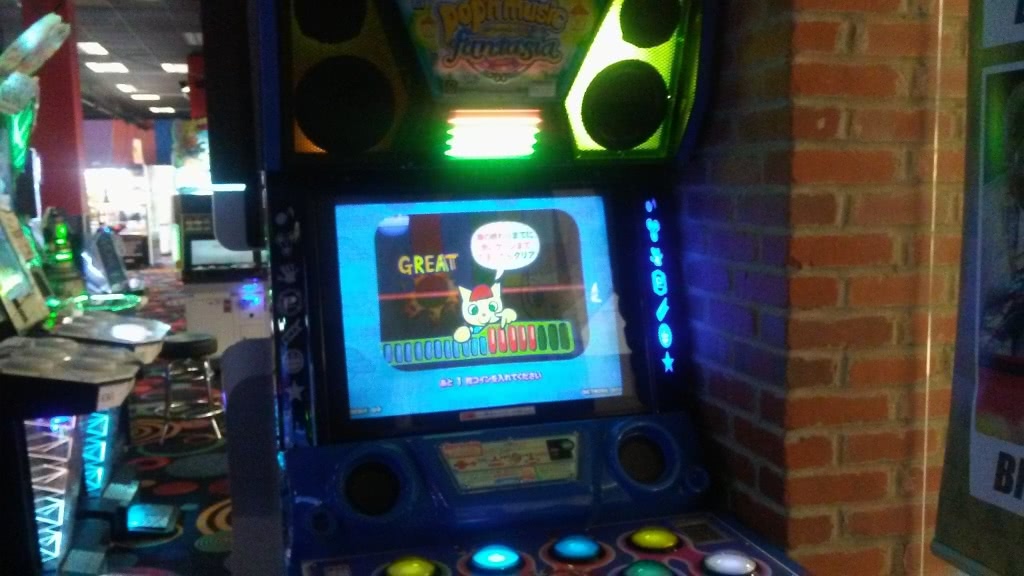
And the other rhythm games, just for the sake of people who wanted to know which machines this location had in 2018.

I walked by this machine two or three times, with its weird-ass face controllers, before finally giving in and playing it. This takes the title of the worst game I took the time to play in Round 1. This game is basically Taiko Master, except instead of “left”, “right”, and “edge”, the only command is “hit the thing”. All the music is stock royalty-free, and the gameplay is so absurdly simple that there’s not much fun to get out of this game.

And, of course, it wouldn’t be Round 1 without an excessive number of UFO catchers. There were like three rows of the things, just like this one.

The game here is called School of Ragnarok. As you can see on the right screen there, it’s a very fanservice-y otaku bait game. It’s an open-range 3-D fighting game where you play as a generic anime avatar character and use the flashier anime characters as your stands.

I also have no fucking clue how you play this game. Look at this. How the hell am I supposed to make heads or tails of this? There’s a joystick, six regular buttons, one big glowy button, a black button, and a black thumbstick nub. Thankfully, the game seems to understand that there are a lot of buttons and labels them for you. Except the labels are all in Japanese. I won like three rounds of this game and still have no bloody idea what any of them do. And trust me, I tried. It doesn’t help that I chose a character whose gimmick is laying down magical bombs and couldn’t figure out what button detonated them. Or that’s what I think those giant glowy spheres were. They could have also amplified my attacks when I stood in them. I honestly don’t know.

As I’m sure you’ll remember, I was in a huge rush the last time I was at Round 1 and didn’t get to explore the prize room. Well, I’ve got time now; let’s see what they’ve got.

On the right, we have a massive display case full of boardwalk arcade-type “who would ever spend ticks on this?” stuff like kitchen supplies.

This is probably one of the most bizarre of all the things I’ve ever seen in an arcade prize room. Do Round 1 arcades have enough foot traffic from Asian girls to justify offering hair dye explicitly made for Asian hair? Would those girls sit around grinding tickets for this hair dye instead of just buying it? Like, what’s the marketing strategy here?

Since Round 1 sells itself on being a Japanese line of arcades, the prize room is filled with other imported stuff like pocky. I was expecting a lot more imported prizes, but it was mostly just the snacks, low-end trinkets, a couple of Japanese electronics, and the goddamn hair dye.

Most of the other stuff were things you’d expect from a high-end arcade prize center, like video game consoles. I’m told that Round 1 isn’t a great place to try to farm prizes like this because it’s nearly impossible to break even with their prices. On the bright side, you don’t have to worry about the “Advantage Player” crowd setting foot in Round 1.

And with that, I’ve said everything I need to about Round 1. Don’t let the tone of this blog post fool you; I like Round 1. It’s just that this particular location was disappointing compared to the one in Philadelphia. There were a bunch of games in Philly, like Musical Gun Gun, that I really wanted to play but weren’t available here. It doesn’t help that Round 1 is a hard place to write about since they have so damn many games but so few I know anything about. Well, whatever.


On the way out of the mall, I came across a bunch of painted tiles made by the local school back in the late 90s. Look at all the Pokemon and South Park mixed in there. It’s an interesting time capsule of 1998.

Oh yeah, I got lost on my way back to the motel. I ended up getting a Lyft to the wrong Motel 6, so I had to call ANOTHER one to take me to the right one. Tom picked the worst damn time to leave me without transportation.
Anyway, the next arcade is one I’m looking forward to showing off. It’s such a hole-in-the-wall place that I doubt most Chicago locals even know about it.

